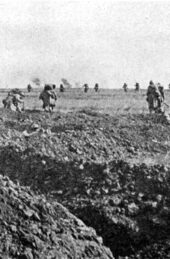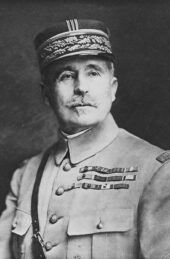The Dardanelles campaign in World War One was conceived as a ‘demonstration’ to relieve pressure on Russian troops, fighting in the Caucasus. It quickly developed into a means of opening the backdoor to the Central Powers and to supply the Russians through the Dardanelles, which had been closed when Turkey entered the war.
The campaign was originally intended to be a naval operation. When this failed, troops were deployed to clear the coastal fortifications along the Dardanelles Straits under the command of General Sir Ian Hamilton.
Hamilton was an experienced commander having seen more combat than any other British General. He was also famed for ‘independent thinking’ and had courted controversy before the war by suggesting that cavalry was obsolete.
Hamilton had to use all his unconventional thinking and experience to devise a plan to land troops against prepared positions, something that had never been attempted before. Added to this, he had lost the element of surprise, giving the Turks months to prepare their defences.
A landing was therefore devised that would create its own surprise through a ‘tactical coup’ that would distract and throw off balance his opposing commander, General Liman von Sanders. This would be done through a series of faints and diversion all along the Gallipoli peninsula and Anatolia, to mask the actual landing sites.
The landings were intended to be a pincer movement designed to envelop the enemy force in the south of the peninsula. The Australian and New Zealand Corps made up the first pincer, landing in the northwest around Gaba Tepe. The British 29th Division made up the second pincer. It landed in the South at Cape Helles. The troops were intended to establish a bridgehead and move inland to take the high ground as the first day’s objectives.
The landings took place on 25th April 1915 and saw spectacular success, breathtaking mistakes and incredible valour, on both sides. After a day of fierce fighting, the Allies had forced a bridgehead in the majority of its landing zones. However in the face of ferocious Turkish defence and poor communication with the ships providing fire support, the Allies had failed to take its first day’s objectives.
Hamilton’s plan to distract the enemy seems to have worked in that von Saunders delayed deploying his strategic reserve. Whether that delay was significant is another matter. Von Saunders had planned to hold the invasion with a covering force until it was clear where the main landings would take place. This also seems to have worked, with the invasion stalled he had sufficient time to counter the landings.
Peter Hart in Gallipoli argues that von Sanders plan was perfectly formulated to counter Hamilton, who had spread his forces too thinly between the various landing sites, in an overly complex plan. The Allies, shocked by the level of opposition they faced, were overconfident and didn’t have sufficient troops to seriously press von Saunders in any one place. So he didn’t commit his reserves until he knew where the main attacks were.
The Allied forces lost the initiative in the opening stages of the campaign and Gallipoli turned into a stalemate in the East, mirroring the trench warfare of the Western Front it was intended to bypass.
Alan Bardos is the author of The Dardanelles Conspiracy, published by Sharpe Books.






